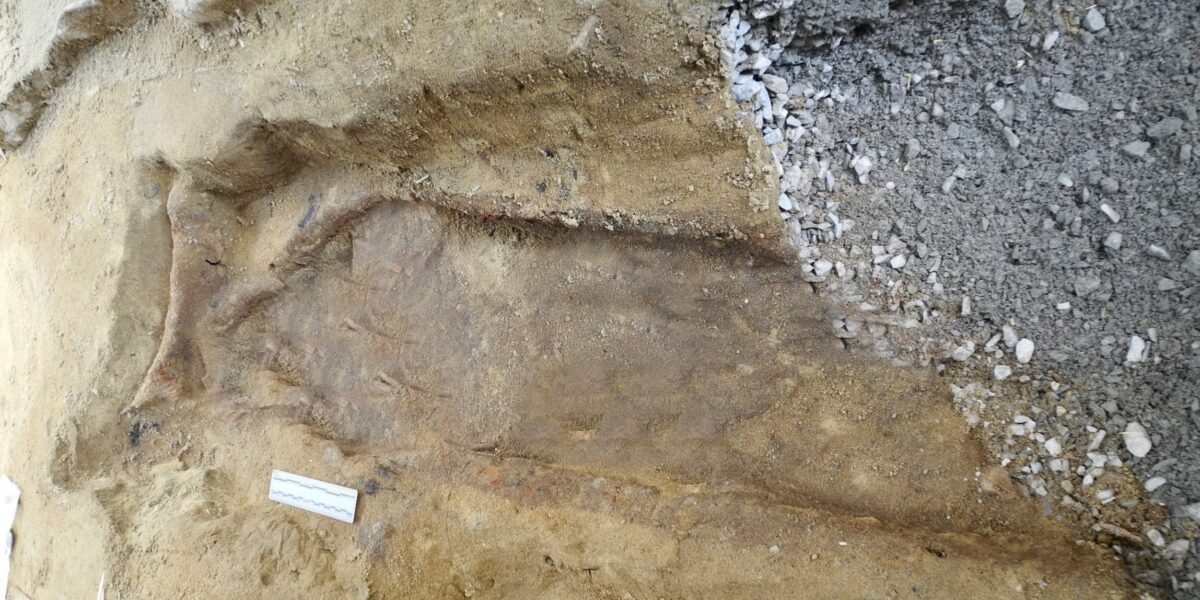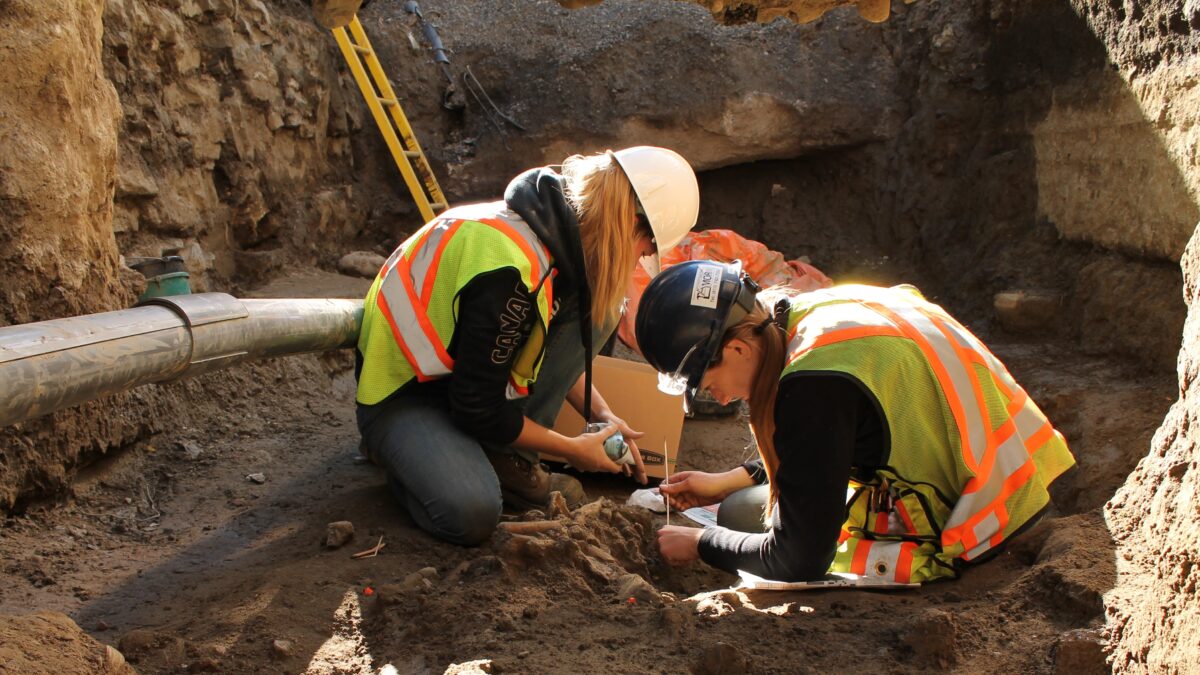Researchers from the Canadian Museum of History are close to confirming the identities of two children who were buried nearly 200 years ago — but lost over time — in a pioneer cemetery in what is now downtown Ottawa.
If successful, it will be the first such successful identification from the former Barrack Hill Cemetery, the future Ottawa’s earliest non-Indigenous burial ground, located near today’s Parliament Hill.

The cemetery had its origins in the 1820s, when the construction of the Rideau Canal began. The canal was built predominantly by Irish and French Canadian workers, and the Corps of Royal Engineers of the British Army, who were mainly English and Scottish. Lieut.-Col. John By, who oversaw the construction of the canal and became the namesake of the new town on the Ottawa River, commissioned the cemetery — a two-acre plot of land bounded by today’s Sparks, Albert, Elgin and Metcalfe streets.
The cemetery was not in use for very long. As Bytown grew and the downtown was established in its present location, the cemetery was closed in about 1845. The new cemetery was established in Sandy Hill, at the site of today’s Macdonald Gardens park. Most of the remains from the former Barrack Hill Cemetery were moved there, but some were left behind.
More than 150 years later, a portion of the cemetery was uncovered and excavated by archaeologists during downtown construction of the LRT. The first find occurred in 2013. Overall, the remains of more than 100 individuals — mainly working-class citizens who died between the late 1820s and early 1840s — were found during the excavation. After researchers from the Canadian Museum of History examined the remains to determine causes of death, patterns of disease and personal characteristics such as sex and age at a time of death, they were reburied at Beechwood Cemetery.

These people were nameless when they were found. Archaeologists found little that could be used to identify them.
“There was very, very little in terms of what we consider grave goods,” said Ben Mortimer, an archaeologist who excavated the cemetery in 2014.
“We did find a couple of small, straight pins that may have been from pinning ornaments or clothing together, or shrouds together. There were a few buttons, and a few shoe fragments. But other than that, it was really limited.”
Now, three years after the last remains were reburied at Beechwood, Janet Young, the physical anthropology curator at the Canadian Museum of History, may have deciphered the identities of two people found at the Barrack Hill Cemetery.
She believes their names were John Anderson, who died on July 3, 1841 at the age of five, and his sister Barbara, who followed her brother in death on July 7, 1841 at the age of three. Their parents were Alexander Anderson and Margaret Whillans.
The two bodies that may belong to John and Barbara Anderson were buried on top of one another.
“There was a bit of dirt in between” the bodies, Young said, but it did not appear that somebody had re-dug the trench and put another body in it.
“It was more like… someone was buried, and then dirt was added, and then someone was buried there directly on top of the other.”
This made Young think that the two may have been related.
“It allowed me to go back through the burial records and, using online resources like Ancestry, to try and identify if we have siblings that match the age profile that I had determined from the remains,” she said in an interview.
“It was just a matter of going through the records that we do have – and not all of the burials, or deaths were recorded – and seeing if we have a match for the age.”
She found a perfect match – not only did the ages of John and Barbara Anderson fit the ages at which the two excavated children had died, but the sequence of deaths matched as well, and the fact that they were buried in the same plot of land.
“It was a really good ‘maybe that’s them’ moment,” she said.

Young couldn’t say what was the exact cause of the children’s deaths, but the manner of their burial and how quickly they died points to an infectious illness.
Early Ottawa was rife with infectious diseases, said Grant Vogl, a senior manager at collections and exhibitions at Bytown Museum.
“There [were] a few typhoid outbreaks in the 1830s and forties. There was cholera. There was malaria in the area, and especially when the workers were excavating and draining swampy areas, including downtown… it was a breeding ground for malaria.” Smallpox was also around.
These diseases would have affected children too, not just the adults. Vogl said that there also were issues with nutrition.
“The families didn’t really have much land where they could grow fresh vegetables.” For a long time, Vogl said, “they were heavily dependent on the government stores and the local producers and eating a lot of salted cured meats and hardtack and things that weren’t incredibly, highly nutritious.”

John and Barbara Anderson did not die of cholera, said Young, because there was no outbreak when they passed, but there was a whole litany of things that could have claimed their lives. Whatever killed them was acute and fulminant, as there are no marks on their skeletons that they suffered from some disease for a long time.
There are other unresolved mysteries about these dead children. Barbara’s eye sockets are black. At first, Young thought that it was caused by the degraded silver coins that were put over her eyes, but further analysis showed that they were burned.
“I can [not] find anything in the literature to explain why that would happen,” Young said.
There was no indication that either of the children were abused. “No broken bones, nothing like that.”
Young has now proceeded to the final stage of identification of remains. This summer, she submitted bone samples to the DNA lab at McMaster University to test them and to conclusively prove that the two bodies she focuses on were siblings. She is now awaiting the results. Young also tracked down the living descendant of their aunt to obtain a DNA sample that will conclusively prove their lineage and confirm that they are indeed John and Barbara Anderson.

She is working on a book that will include the stories of John and Barbara Anderson, and other working-class people buried at the Barrack Hill Cemetery that could be gleaned from their remains.
“You have history books filled with Nicholas Sparks, Dalhousie, and the Colonel By, and all the more well-known people that built Bytown, but you don’t get the name of the person who did most of the working and living and dying in the town. Those voices are muted, usually,” she said.
“People who are lost in time, all of a sudden get a voice.”





Wonderful story. Two youngsters, deprived of long lives, who get to live again. Well done, to all concerned.
Yes the power of DNA, expert sleuthing scientists, some records on Ancestry and other computerized documents. FUN!